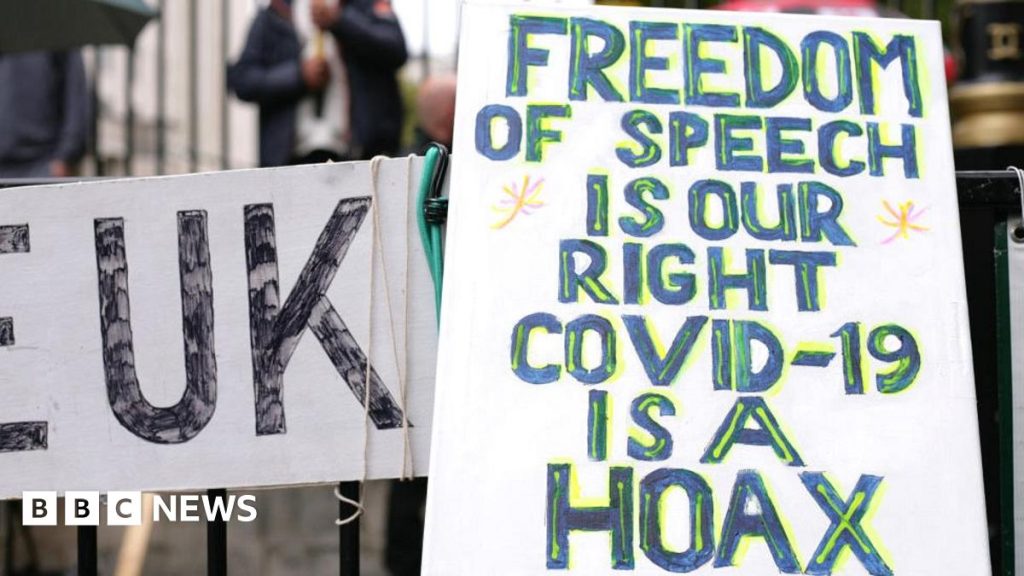Navigating the Murky Waters of Misinformation: A Delicate Balancing Act
The digital age has ushered in an unprecedented era of information accessibility, connecting billions across the globe and democratizing knowledge sharing. However, this interconnectedness has also spawned a shadow pandemic: the proliferation of misinformation. False and misleading information, particularly concerning science and health, poses a grave threat to public well-being, influencing vital decisions with potentially life-altering consequences. From vaccine hesitancy fueled by online falsehoods to violence sparked by conspiracy theories, the detrimental impact of bad information is undeniable.
The challenge lies in finding effective solutions to combat this infodemic without impinging on freedom of expression and the crucial role of scientific debate. The Royal Society, the world’s oldest scientific institution, has weighed in on this complex issue, advocating against the outright removal of "legal but harmful" content from social media platforms. Instead, they propose algorithmic adjustments to curb the viral spread of misinformation and dismantle the financial incentives driving its creation and dissemination. This approach aims to strike a balance between protecting the public from harmful falsehoods and upholding the principles of open dialogue and intellectual discourse.
However, this stance has sparked controversy, particularly among researchers specializing in the dynamics of online misinformation. Organizations like the Center for Countering Digital Hate (CCDH) argue that in certain cases, removal of demonstrably false and widely disseminated content is the most effective course of action. They cite the "Plandemic" video as a prime example, highlighting its rapid spread of dangerous misinformation regarding COVID-19. The video’s sequel, "Plandemic 2," met with significantly less success due to proactive restrictions implemented by social media platforms, demonstrating the potential efficacy of content removal in mitigating harm.
This divergence of opinion underscores the delicate tightrope walk between safeguarding public health and respecting individual liberties. Professor Rasmus Kleis Nielsen, director of the Reuters Institute for the Study of Journalism at the University of Oxford, emphasizes the inherent political dimension of this debate. The question of how to balance individual freedoms with limitations on expression remains a contentious one, with no easy answers. He acknowledges the disproportionate harm caused by science misinformation, even though it constitutes a relatively small portion of overall media consumption.
Furthermore, Nielsen points to a crucial underlying factor: the erosion of trust in established institutions. This distrust, he argues, is a significant driver of misinformation, making it even more challenging to implement effective countermeasures. Paradoxically, attempts by these very institutions to control the flow of information, even with the best intentions, could inadvertently reinforce public skepticism and fuel further distrust. This highlights the need for nuanced and transparent approaches that build, rather than erode, public confidence.
The fight against misinformation requires a multifaceted strategy that goes beyond simple content removal. Improving media literacy, fostering critical thinking skills, and promoting fact-checking initiatives are essential components of a comprehensive approach. Empowering individuals to discern credible information from falsehoods is crucial. Furthermore, collaboration between social media platforms, researchers, and policymakers is vital to develop effective strategies that address the root causes of misinformation and mitigate its harmful effects.
Social media platforms, as gatekeepers of information flow, bear a significant responsibility in combating misinformation. Transparency in their algorithms and content moderation policies is essential to foster trust and accountability. Fact-checking partnerships and the development of reliable reporting mechanisms for users to flag misleading content can also play a crucial role. However, these efforts must be carefully calibrated to avoid inadvertently amplifying or legitimizing false narratives.
The battle against misinformation is not merely a technological challenge; it is a societal one. It requires a collective effort to foster a culture of critical thinking, media literacy, and informed decision-making. The stakes are high, as the consequences of unchecked misinformation can be devastating. Finding the right balance between protecting individual freedoms and safeguarding public health remains a complex but essential task in the digital age. The quest for truth and accuracy in the face of an overwhelming tide of information demands constant vigilance, collaboration, and a renewed commitment to evidence-based decision-making. The future of informed discourse, and indeed public health, depends on it.


